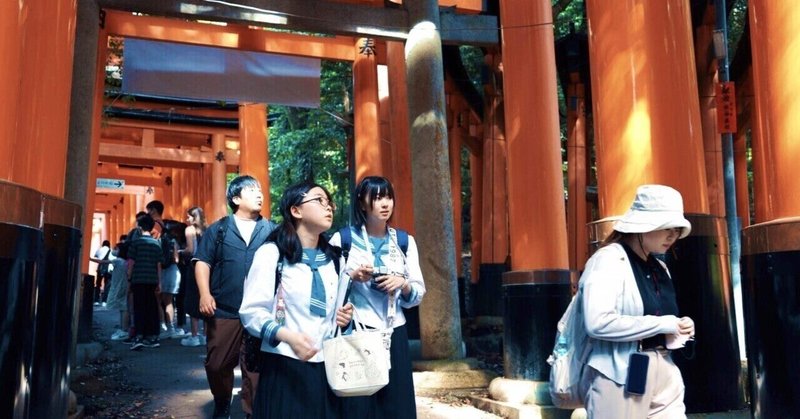
【Event】Second day of the 9th grade school trip
Before we left, we checked the forecast and it said it would be raining. Luckily, that didn't happen, and we had a nice breezy start to the day.

The plan for our second day is to go to Kyoto city by train from Osaka. It was nearly time for rush hour so we moved swiftly, without getting lost in the crowds.
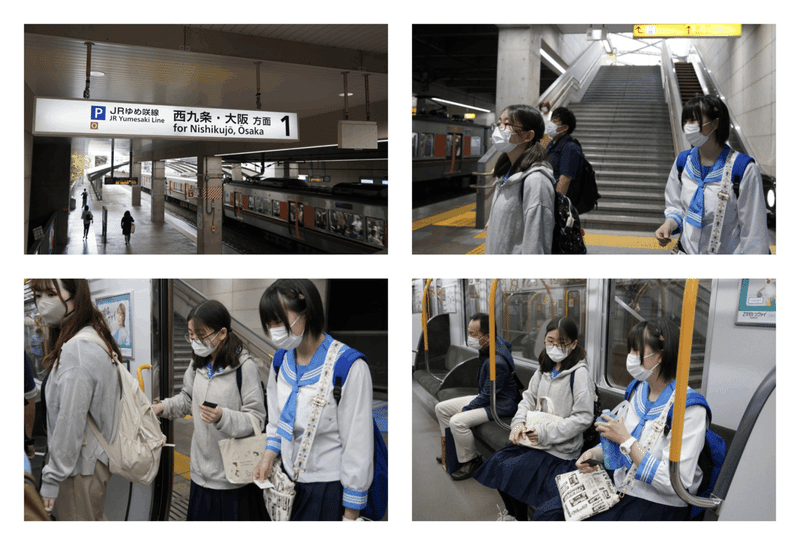

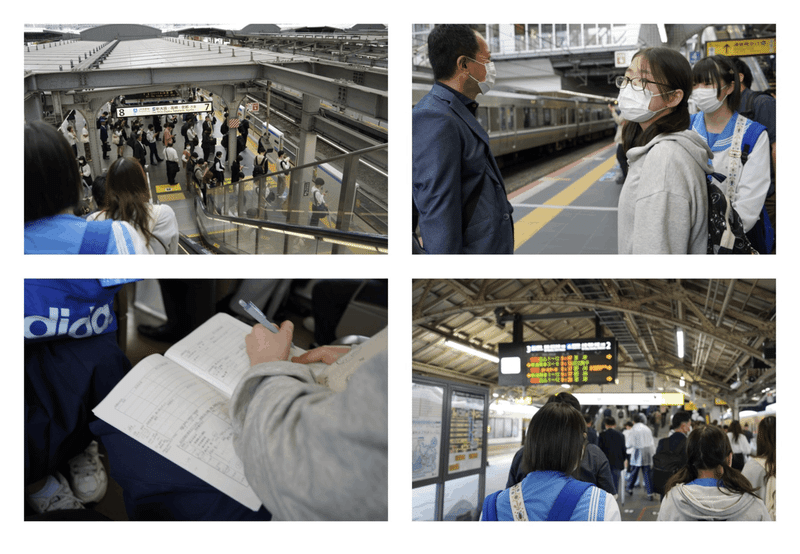
While travelling, we reviewed our journey, and confirmed the schedule.

We climbed into a taxi, and we were amazed by the size of Kyoto station. In the car, the taxi driver gave us a guidebook. Along the way we saw other students on excurions too, and the driver told us about how crowded Kyoto is, popular sights to see, and his recommendations for souvenirs.
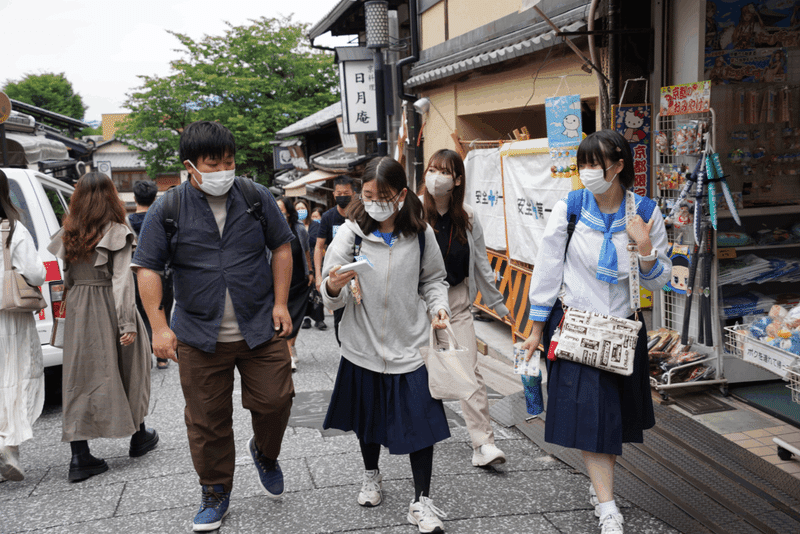

We climbed up the hill and arrived at Kiyomizu-dera. At this time, we were invited to the temples office by the head priest of Kiyomizu-dera temple, Seihan Mori, who wrote the name of our school in calligraphy.
Thank you for your lesson.
The story begins with a single kanji, "戦 Ikusa" (War), which shows the social conditions of the past year, and the origin of the words "北 Kita" (North), "背 Se" (Back), and "仁 Jin" (Justice). The kanji character for "North" is a character which means back to back. "Justice" shows the importance of having common sense, by communicating with others, it enhances this sense. The conflicts that are happening in the world today are not something that we can solve immediately. Still, there are things that change due to how one changes their perception. Although the atmosphere of "war" still remains strong at present, I hope that the future of these two students will be a more peaceful world than it is now.
After the lesson, we received a booklet about Kiyomizu-dera Temple, in which words such as "愛 Ai" (Love), "清 Sei" (Purity), "心 Kokoro" (Heart), "夢 Yume" (Dream), "希 Ki" (Wish), and "真 Makoto" (Truth), were written, and we took some photos.
After that, Mr. Teruhisa Sakai, a curator, explained Kiyomizu-dera in detail. We were able to enter places that were not open to the general public, such as Tahokaku. It was a very meaningful time for us, because we were able to hear valuable stories that are rarely heard. One such story was about how Kiyomizu-dera was built on this site originally.
We would like to express our sincere gratitude to Mori Saihan, Mr. Sakai Teruhisa, Mr. Nakanishi Kaoru, and everyone at the temple, for their warm hospitality despite their busy schedules.

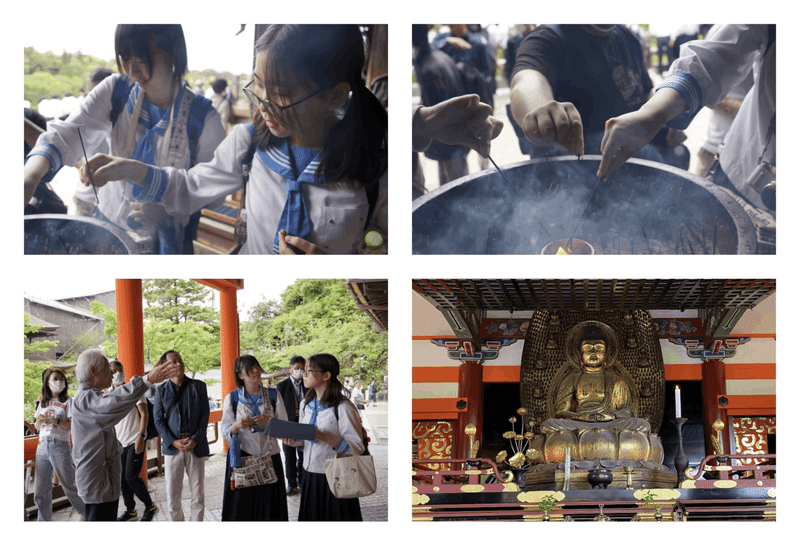
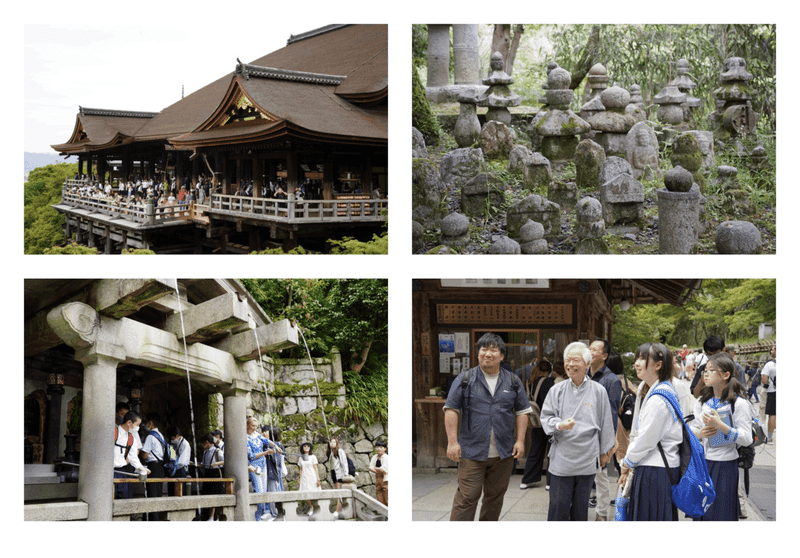
After leaving Kiyomizu-dera, the two students had different destinations. The two teachers accompanied each student, but they were on their on when it came to transport and time. We aimed to meet again while keeping in touch via our iPads.
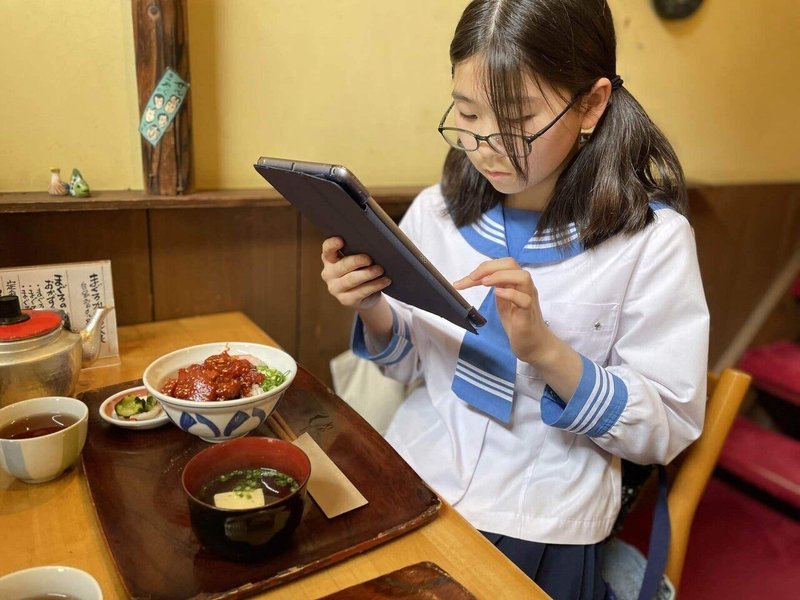


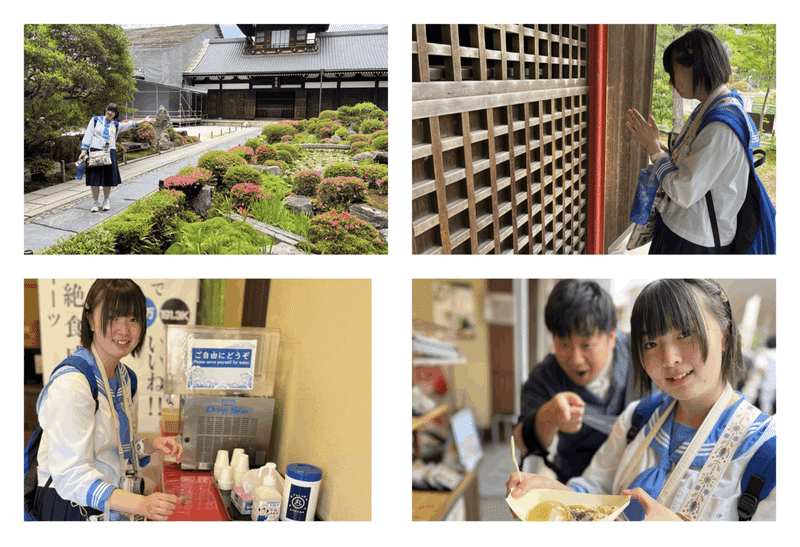
We aimed to meet at Fushimi-Inari Shrine after passing through Sanneizaka and Tofukuji. We purchased tickets from Kiyomizu-Gojo station. We checked to make sure we could afford a ticket to Fushimi-Inari Station. There are many foods stands, with food unique to tourist locations, and we enjoyed eating while walking.


We met again safely and went around Senbon Torii. Both of the students reacted differently to the Omokaruishi: "Heavy!" and "Light!". The student who said it was too heavy also showed a positive attitude, she said "It means that I didn't make enough effort."
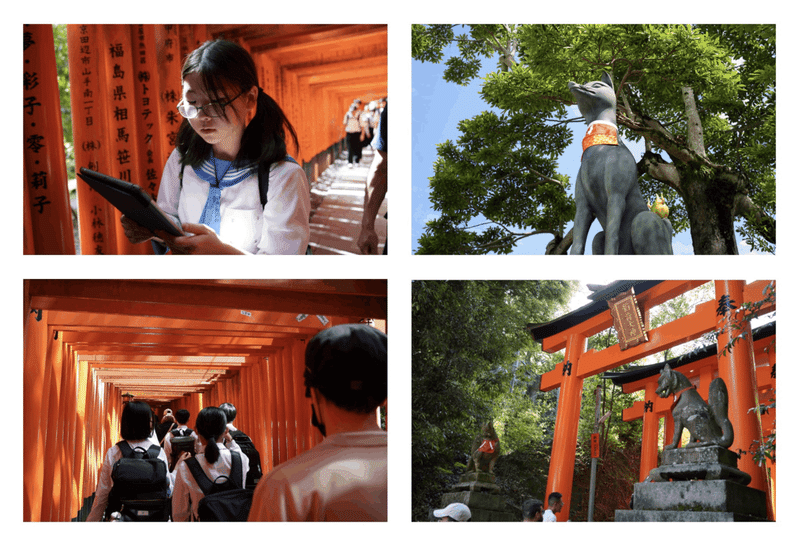
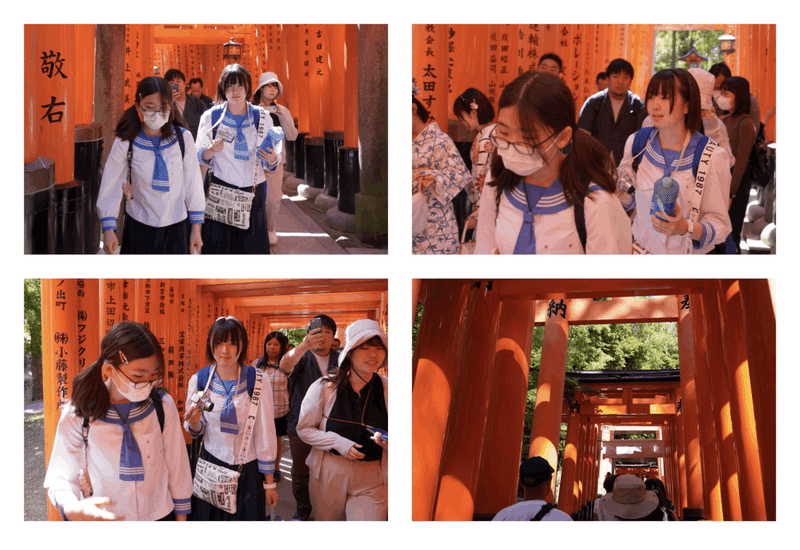



After leaving the Fushimi-Inari Shrine, we went to Kyoto station to enjoy the "Obanzai Buffet," our last dinner for the school trip.



We were tired from the first day, our legs were especially sore. The students complained about when we got a flat tire. We were able to take a break at a rest area in Kyoto stations upper floors. We then had a delicious dinner, and headed to our hotel.

Today is the last day, and we hope to enjoy visiting Universal Studios Japan!
